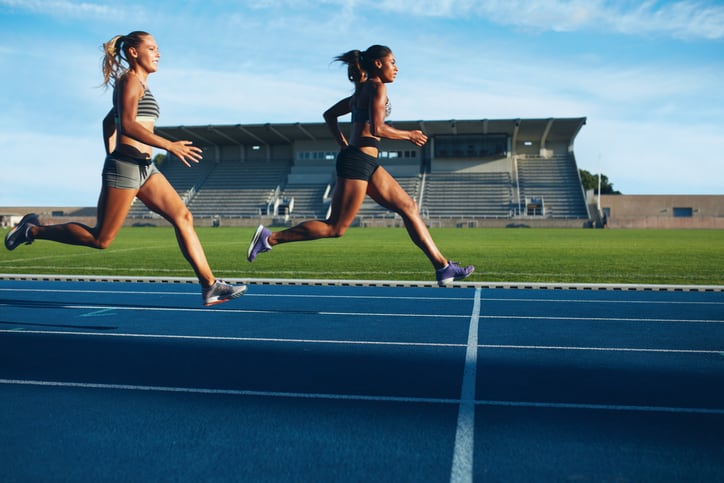Speaking at the event, Orla O’Sullivan, senior computation biologist at Teagasc Food Research centre, discussed her recent longitudinal studies following elite athletes during event training, which emphasised the negative impact of factors such as stress, sleep, and dietary changes on microbial diversity within the gut.
It was observed that the produced metabolites, species, and diversity of resident gut microbes were all influenced as a result.
The importance of this real-time tracking of microbial changes was highlighted with regards to improving the effectiveness of dietary interventions, O’Sullivan asserted.
“We could see that when the athlete was at their fittest, the microbial diversity was at their peak. Illness and antibiotics caused drops in diversity. For the first time we can show real time changes, and use it going forward to monitor and make sure microbiome remains stable,” she told the audience.
An elite microbiome
“We don’t know what makes a healthy microbiome, but what we do know is that diversity is key. The more microbes you have, the more functions they will perform,” O’Sullivan explained.
She discussed a previous study involving an Irish rugby team, explaining the established increased microbial diversity in the microbiomes of elite athletes: “The more protein that the athletes had in their diet, the more microbial diversity they had. We then used the enzyme creatine kinase, which is released from muscles post exertion, as a marker for fitness. We found that the higher CK levels in the blood, the higher the microbial diversity. So, a high microbial diversity was associated with fitness and high protein intakes.”
In addition, metabolomic measures reported greater by-products of protein metabolism, such as carnitines and trimethylamine, as well as increased metabolites suggesting muscle turnover, including elevated creatine and 3 methyl histidine levels.
She adds that her research has suggested that this was established due to chronic adaption to fitness, which could not be reached following a short-term increase in exercise.
A further pilot study by the team at Teagasc measuring the effects of completing the ‘iron man’ event on the microbiome, observed no changes in inter- and intra- individual diversity of bacterial species following race completion, compared to measures prior to the event. O’Sullivan highlights that these findings suggest “major microbiome stability” in elite athletes.
“What we did see were changes in the metabolites… so changes in how these microbes were functioning and fuelling the athletes. There was a reduction in SCFAs post-race including butyric and pivalic acids,” she adds.
Travel and the microbiome
Following a previous study highlighting the effects of travel on the microbiome within a cricket team, O’Sullivan highlights her soon-to-be published research investigating this within a UK elite football team. It was noted that the members who stayed in the UK had more beneficial bacterial species, whilst those who travelled to a new country had reductions in these population numbers.
Paired with this, the travelling athletes showed increases in faecal bile acids; a pattern which has been associated with irritable bowel disease (IBD) and stress.
Applying these findings to long-term personalised studies using two elite athletes training for a triathlon and a marathon has enabled these changes to be tracked in real-time, she explains.
“Studying the microbiome allows for a non-invasive measure of health. We can then track changes following illness or medication use, and can now pre-empt impacts of stress, diet, travel, sleep patterns, and injury. This will support effectiveness of dietary interventions,” she concludes, foreshadowing that the findings may shape the future of personalised sports nutrition for elite athletes.
An intimate study on a CrossFit Champion
Also providing insights into the impact of exercise on the gut, Chad Kerksick, director of exercise and performance Nutrition Library at Lindenwood University, presented findings of the yet-to-be-published longitudinal study that explored the microbiota of an elite athlete in comparison to two controls.
The study closely focused on the microbiome data collected from Australian weightlifter and CrossFit Games champion, Tia-Clair Toomey-Orr. The 28-year-old female was studied over the course of 16 weeks, tracking the build up to her sixth-consecutive title win at the 2022 CrossFit Games, and after.
The study involved two controls: a genetic control being Tia’s sister, and an environmental control being another 28-year-old female who trained at the same gym.
Tracking faecal and blood samples, the similarities and discrepancies were analysed. Similar microbiome levels were initially found in all three participants but as training volume increased, so did microbial taxa.
Toomey-Orr’s samples showed that the bacterial communities and the genes expressed, all adapted to more closely resemble the environmental control and less like the genetic control.
It was immediately following the competition that highest recordings of bacteria variety were found, and of all samples, Toomey-Orr consistently displayed the most diversity.
An under explored area
Kerksick noted the importance of the attained data being female specific, making the point that this is an area which is often under-studied. He said: “There's not a whole lot of female athletics in expert level sport.”
And while past studies have been conducted on the gut microbiota of elite female athletes, Kerksick noted that it was the intensely personal style of study made it unique, saying: “The complexity of the faecal metabolome, as well as plasma metabolome analysis, I would argue has not been done in any athlete at any level in any sport.”

